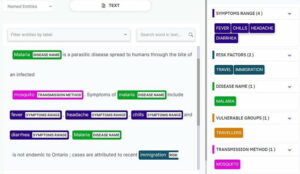
Are you looking for a way to enhance your company’s marketing strategies? Look no further than AI. The technology might be evolving, but more and more people are embracing its potential. AI is making its mark on the working world with automated tools for everything from content creation to data management. According to Inkwood Research, global companies are projected to spend over $82 billion on AI marketing by 2028.
Marketing is yet another area where AI’s capabilities can make waves. Your goal is to attract, engage, and retain your audience, but you need effective strategies to pull it off. Designing and implementing a strategy consumes resources, so you want it to be as spot-on as possible. AI can help your team accomplish this by pointing toward more effective, impactful design and execution. Here are four ways AI technology strengthens marketers’ work.
1. Create Content With Ranking Power
For online content to rank, it has to provide the answers audiences are searching for. But more than this, content must say something. It has to have meat on its bones. Otherwise, people will grow disappointed when they realize they’re reading fluff.
Instead, content should be authoritative and satisfy audiences’ appetites. While content marketing strategies start with keyword research, keywords alone aren’t enough to carry your message. Thorough strategies usecontent pillars to dive deeper into topics target markets find relevant.
The pillar approach employs long-form and shorter-form content to build credibility. For instance, you create a pillar page with an overview of your main topic. The page is long, somewhere around 3,000 words. Underneath your primary pillar are three to four sub-topics linking to your main page. Shorter blogs with answers to specific topic-related questions support each of your sub-pillar pages.
Structuring a content pillar strategy can get complicated if you don’t know where to start. AI tools can reveal what questions your audience is asking and what search terms tie back to specific topics. The software helps you design your content strategy’s blueprint so you get to work on building it. As a result, you’ll create more detailed pieces while increasing your rank, authority, and reach.
2. Discover What Consumers Are Thinking
Traditionally, marketers go directly to consumers to find out what they think. For example, surveys can seek feedback about ad campaigns, products, and brands. While this type of research provides data, it’s time-consuming. Plus, response rates may not be high enough to be statistically significant. You might also run into problems with incomplete and less-than-forthcoming answers.
The fact is, consumers are bombarded with surveys. They don’t see much value in completing them, especially when companies seem to ignore the feedback. Response rates have gone down toaround 2%, which doesn’t give you an accurate picture of consumer sentiment. The data you get also depends on what questions you ask and may not reliably predict outcomes like repeat purchases.
AI determines consumers’ attitudes and reactions from multiple data sources. The technology can analyze comments from social media posts, words from online reviews, and conversations with customer service. You’ll get a more complete picture of what people think about your marketing campaigns and brand strategies. You can assess whether your work is having the desired effect or if you should change course.
3. Automate Personalized Outreach
Marketing has to grab people’s attention. At the same time, it should be personal without feeling too intrusive. Audiences tend to respond better to messages with a touch of personalization. Yet it depends on the type of personalization and how you do it.
For instance, data shows emails with personalized subject lines get an18.79% open rate. Generic subject lines result in a higher 22.14% open rate. Go figure. But when the body of an email contains personalized content, open and click rates rise.
AI analyzes what type of personalization drives results in addition to automating customized communications. You can target shoppers who haven’t bought anything in three months, personalizing the content with past frequent purchases. You might remind loyalty program members their rewards are expiring. Or you could highlight incentives on products people were browsing during past visits.
Automated outreach can also be more brand- and service-oriented. Maybe you know certain website visitors engage with specific content. Your communications could announce newly published pieces on the same topic, driving them back to your site. Another example is sending announcements about sponsored community events aligned with audience members’ interests.
Marketing strategies involve deciding where to place ads and content. Your plan could include an initial blitz campaign for a new product launch. You want tons of exposure, so you figure you’ll buy online ads, commercial spots on streaming platforms, and so on.
Mapping out all the logistics can take the skills of a traffic cop. You need to know where to best reach your target market. Simultaneously, you don’t want to overspend. Spending a lot on media buys with no-so-hot results isn’t a marketer’s dream.
AI can assist by locating the most economical ad spend opportunities. Your team can focus on securing the ad placements instead of researching which spots will be the best fit. You’ll optimize your media budget and audience reach.
AI for Marketers
When marketing strategies become a hit-or-miss exercise, brands and consumers lose. Still, strategies require strong data analysis to be successful. Using AI-backed tools increases the chances your information will be accurate and well-rounded. With AI’s assistance, your marketing strategies will involve less of a guessing game and drive the outcomes you want.
- SEO Powered Content & PR Distribution. Get Amplified Today.
- PlatoData.Network Vertical Generative Ai. Empower Yourself. Access Here.
- PlatoAiStream. Web3 Intelligence. Knowledge Amplified. Access Here.
- PlatoESG. Carbon, CleanTech, Energy, Environment, Solar, Waste Management. Access Here.
- PlatoHealth. Biotech and Clinical Trials Intelligence. Access Here.
- Source: https://www.smartdatacollective.com/ways-ai-can-enhance-marketing-strategies/
- :has
- :is
- :not
- :where
- 000
- 22
- 26
- a
- About
- accomplish
- According
- accurate
- Ad
- addition
- Ads
- AI
- AI marketing
- aligned
- All
- alone
- also
- an
- analysis
- analyze
- analyzes
- and
- Announce
- Announcements
- Another
- answers
- anything
- approach
- ARE
- AREA
- around
- AS
- ask
- asking
- assess
- assist
- Assistance
- At
- attention
- attract
- audience
- audiences
- authority
- automate
- Automated
- automating
- back
- BE
- become
- BEST
- Better
- Billion
- blogs
- body
- bought
- brand
- brands
- Browsing
- budget
- build
- Building
- but
- buy
- Buys
- by
- Campaign
- Campaigns
- CAN
- Can Get
- capabilities
- carry
- certain
- chances
- change
- click
- comments
- commercial
- Communications
- community
- Companies
- Company’s
- complete
- completing
- complicated
- consumer
- consumer sentiment
- Consumers
- contains
- content
- content marketing
- content-creation
- conversations
- could
- course
- create
- creation
- Credibility
- customer
- Customer Service
- customized
- data
- data analysis
- data management
- Deciding
- deeper
- depends
- Design
- designing
- desired
- detailed
- determines
- directly
- discover
- dive
- do
- Doesn’t
- Dont
- down
- dream
- drive
- drives
- driving
- during
- each
- effect
- Effective
- emails
- embracing
- employs
- engage
- enhance
- enough
- especially
- Ether (ETH)
- events
- everything
- evolving
- example
- execution
- Exercise
- Exposure
- external
- fact
- feedback
- Figure
- Find
- fit
- fluid
- Focus
- For
- Forbes
- four
- frequent
- from
- further
- game
- get
- Give
- Global
- Go
- goal
- gone
- grab
- Grow
- Have
- having
- help
- here
- High
- higher
- Highlight
- How
- HTTPS
- if
- impactful
- implementing
- in
- Incentives
- include
- Increases
- increasing
- information
- initial
- instance
- instead
- interests
- internal
- into
- involve
- IT
- ITS
- jpg
- keywords
- Know
- launch
- less
- like
- lines
- linking
- locating
- logistics
- Long
- Look
- looking
- lose
- Lot
- Loyalty
- Loyalty Program
- Main
- make
- Making
- management
- mark
- Market
- marketers
- Marketing
- Marketing Campaigns
- Marketing Strategies
- Markets
- May..
- maybe
- Meat
- Media
- Members
- message
- messages
- might
- months
- more
- most
- much
- multiple
- must
- Need
- New
- new product
- newly
- no
- of
- off
- on
- online
- open
- opportunities
- Optimize
- or
- otherwise
- out
- outcomes
- outreach
- overview
- page
- pages
- past
- People
- people’s
- personal
- personalization
- Personalized
- picture
- pieces
- Pillar
- Place
- placements
- plan
- Platforms
- plato
- Plato Data Intelligence
- PlatoData
- plus
- possible
- Posts
- potential
- predict
- primary
- problems
- Product
- product launch
- Products
- Program
- projected
- provide
- provides
- published
- purchases
- Questions
- rank
- Ranking
- Rate
- Rates
- reach
- reactions
- Reading
- realize
- relevant
- repeat
- require
- research
- Resources
- Respond
- response
- result
- Results
- retain
- reveal
- Reviews
- Rewards
- Rise
- Run
- same
- say
- Search
- searching
- securing
- see
- Seek
- seem
- sending
- sentiment
- service
- Shoppers
- should
- Shows
- significant
- simultaneously
- site
- skills
- So
- Social
- social media
- Social Media Posts
- Software
- something
- somewhere
- Sources
- specific
- spend
- Spending
- Sponsored
- spots
- start
- statistically
- Still
- strategies
- Strategy
- streaming
- Strengthens
- strong
- subject
- successful
- support
- Take
- Target
- team
- Technology
- terms
- than
- The
- their
- Them
- they
- think
- this
- three
- TIE
- time
- time-consuming
- to
- tons
- too
- tools
- topic
- Topics
- touch
- toward
- traffic
- type
- using
- value
- visitors
- Visits
- want
- Way..
- ways
- Website
- were
- What
- when
- whether
- which
- while
- WHO
- will
- with
- without
- words
- Work
- working
- world
- yet
- you
- Your
- zephyrnet









